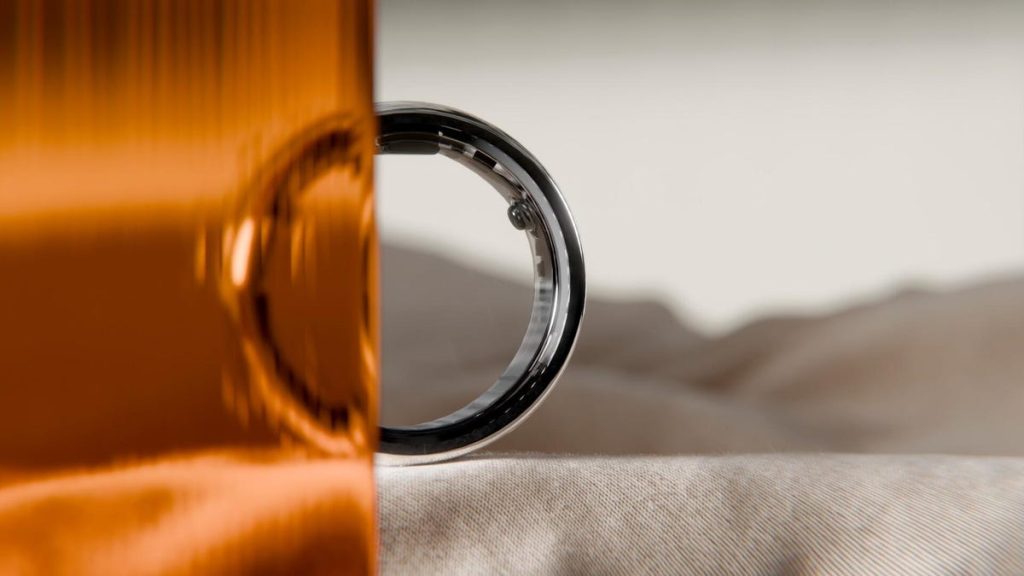The landscape of wearable health technology is rapidly evolving, with smart rings emerging as a compelling alternative to traditional wrist-worn devices. The newly announced Circular Ring Gen 2 exemplifies this trend, bringing atrial fibrillation (Afib) detection to the fingertip. This feature, commonplace in smartwatches like the Apple Watch, remains a relative rarity in the smart ring arena, highlighting Circular’s push towards more comprehensive health monitoring in a compact form factor. Priced at $380 and slated for release in early 2025, the Circular Ring Gen 2 positions itself as a direct competitor to established players like Oura and emerging contenders like Samsung, signifying a growing and increasingly competitive market.
Afib, an irregular heartbeat that elevates the risk of stroke and other cardiovascular complications, affects a substantial portion of the population. The ability to detect this condition passively and conveniently through a smart ring offers significant potential for early diagnosis and intervention. Circular’s claim of FDA clearance for its Afib detection algorithm adds a layer of credibility to its offering, emphasizing the ring’s potential as a legitimate medical tool rather than simply a wellness accessory. The integration of such advanced health tracking capabilities into a ring format underscores the broader shift towards unobtrusive and continuous health monitoring, moving beyond the limitations of periodic electrocardiograms (ECGs) performed in clinical settings.
The Circular Ring Gen 2 boasts several enhancements beyond Afib detection. Crafted from titanium and available in a variety of metallic finishes, the ring aims for both durability and aesthetic appeal. A promised eight-day battery life addresses a common concern with wearable devices, minimizing interruptions for charging. Furthermore, Circular has revamped its companion app, suggesting a focus on enhancing user experience and data accessibility. These improvements, combined with the core functionality of Afib detection, position the Circular Ring Gen 2 as a compelling alternative to wrist-worn wearables for individuals seeking continuous health insights without sacrificing style or convenience.
The emergence of the Circular Ring Gen 2 underscores the growing momentum of the smart ring market. While companies like Oura have established a strong presence in this space, the entry of new players like Circular and Samsung signifies a broadening of the market and an acceleration of innovation. The International Data Corporation’s reported 88.4% growth in smart ring shipments in 2024 further validates this trend, indicating a rapid adoption of this form factor. This surge in popularity can be attributed to the discreet nature of smart rings, their potential for continuous and unobtrusive health monitoring, and their growing sophistication in terms of sensor technology and data analysis.
Smart rings present a unique set of advantages compared to smartwatches. Their smaller form factor allows for more comfortable and consistent wear, often going unnoticed throughout the day and night. This continuous contact with the body enables the collection of richer and more comprehensive health data, including sleep patterns, heart rate variability, and now, with the Circular Ring Gen 2, Afib detection. This continuous data stream provides a more holistic view of an individual’s health, potentially revealing subtle trends and anomalies that might be missed with less frequent measurements.
The increasing sophistication of smart rings is pushing the boundaries of what’s possible in wearable health technology. They are no longer simply niche accessories but are becoming serious contenders in the broader wearable market. As companies like Circular continue to innovate and refine their offerings, smart rings are poised to play an increasingly important role in personal health management, empowering individuals with actionable insights to proactively manage their well-being. The convergence of advanced sensor technology, sophisticated algorithms, and user-friendly design is transforming smart rings into powerful tools for continuous health monitoring, potentially revolutionizing the way we approach preventative healthcare.

